NaNoWriMo 2024: Write Your Novel In 30 Days With LivingWriter
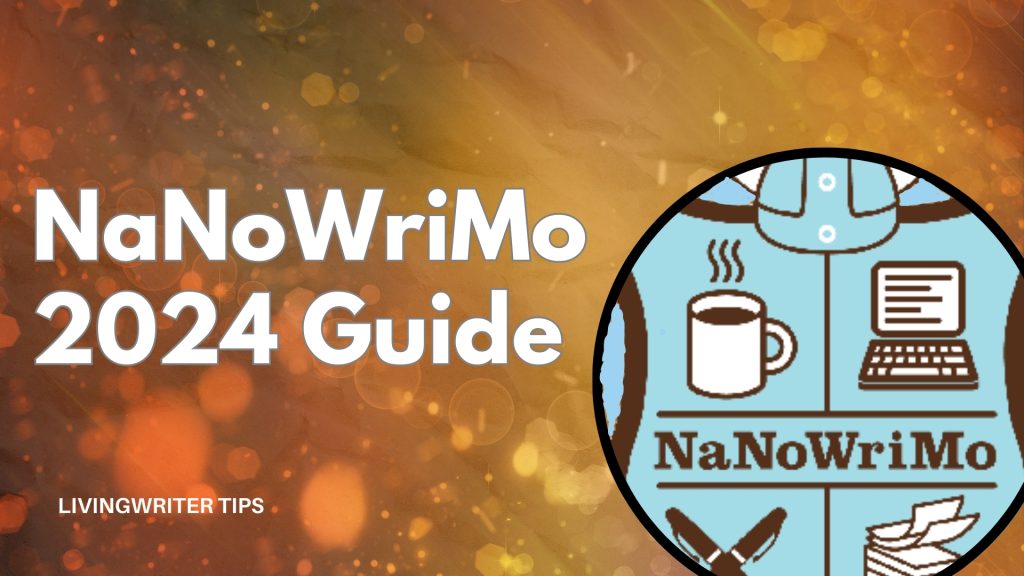
As we approach mid-October, we are getting closer and closer to National Novel Writing Month (NaNoWriMo) where authors set out to write a 50,000 word novel in November. Hundreds of thousands of writers all over the world participate in the event, setting goals, and attempt to crank out a whole novel in just a month.
Of course, this is no easy task, and not everyone who starts manages to finish their story. In fact, less than 20% of the participants each year finish their story! Still, there is value in challenging yourself and writing every day. That said, LivingWriter is your secret weapon to crush your NaNoWriMo 2024 goal.
Today, I’ll cover everything you need to know about NaNoWriMo, why it’s awesome, and how LivingWriter can help you improve your storytelling, track your word count goals, and dominate the challenge. Buckle up, aspiring novelists, and let’s dive in.
Table of Contents
What Is NaNoWriMo?
NaNoWriMo is a global phenomenon that encourages writers to draft a novel in November. Yep, you have one month to crank out 50,000 words (at least) of writing, usually fiction. Whether you’re a seasoned author or a total newbie, NaNoWriMo is a fantastic way to kickstart your creativity, push your limits, and join a thriving community of fellow writers.
Let’s take a look at the NaNoWriMo 2024 rules.
NaNoWriMo Rules
The rules for NaNoWriMo are pretty simple and straightforward. Here are the key things you’ll need to know to participate.
- Time Frame: The writing period lasts from midnight on November 1 to 11:59 PM on November 30 (in your local time zone)
- Word Count Requirments: To “win,” writers must write at least 50,000 words during the time frame mentioned above. This can be an entire novel or the 50,000 words of a longer story.
- Pre-Planning: You can plan your story and take notes before the challenge starts. However, nothing written before November 1 can be included in the final novel.
- Genre: You can write about anything you want, including fan-fiction, regular novels, and even non-fiction.
- Age Requirements: You have to be at least 13 years old to participate. And if you’re under 17, you can sign up for the Young Writers Program.
- Codes of Conduct: Your work must be original. So, you may not post anything that belongs to someone else without permission or expose other people’s personal information in any way.
NaNoWriMo is a self-challenge, so “winners” are people who complete the 50,000. You won’t be competing against other writers. Writers who do succeed can expect “winner goodies” like a downloadable, displayable banner and badge, discounts on writing programs, and merch that is available for purchase.
Why You Should Do NaNoWriMo In 2024
NaNoWriMo offers a ton of benefits beyond just a completed manuscript (though that’s pretty sweet). Here are a few reasons to jump on board:
- Unleash your creativity: Spark your imagination and get that first draft flowing.
- Develop discipline: NaNoWriMo is all about consistency. You’ll build writing stamina and learn to focus on the finish line.
- Join the community: Connect with other writers on forums and social media. Share your struggles, celebrate victories, and find inspiration.
- Prove to yourself: NaNoWriMo is a fantastic confidence booster. Completing this challenge shows you can achieve anything you set your mind to.
How To Use LivingWriter For NaNoWriMo 2024
LivingWriter isn’t just a writing platform – it’s been voted the Best Writing App in recent years and is a writer’s best friend. It has everything you’d expect of a traditional word processor. With the addition of story outlining and plotting features that help improve your flow and pace. Plus, advanced story elements to write better characters.
LivingWriter also has several AI features that can bring out the best in your writing without doing it for you. Perhaps most valuable for NaNoWriMo is word count tracking and goal setting to ensure you stay on par to make your goal in the allotted time.
Let’s break these down in greater detail and see why you won’t want to tackle NaNoWriMo 2024 without LivingWriter.
Story Outlines And Plotting Board
Creating a story outline before you write is usually a good idea, especially for longer works like novels. However, when you use LivingWriter, you have several outlines and structures to choose from, and they’re integrated directly into the manuscript. Let me show you.
When you start a new manuscript in LivingWriter, you’ll have a whole list of templates to choose from:
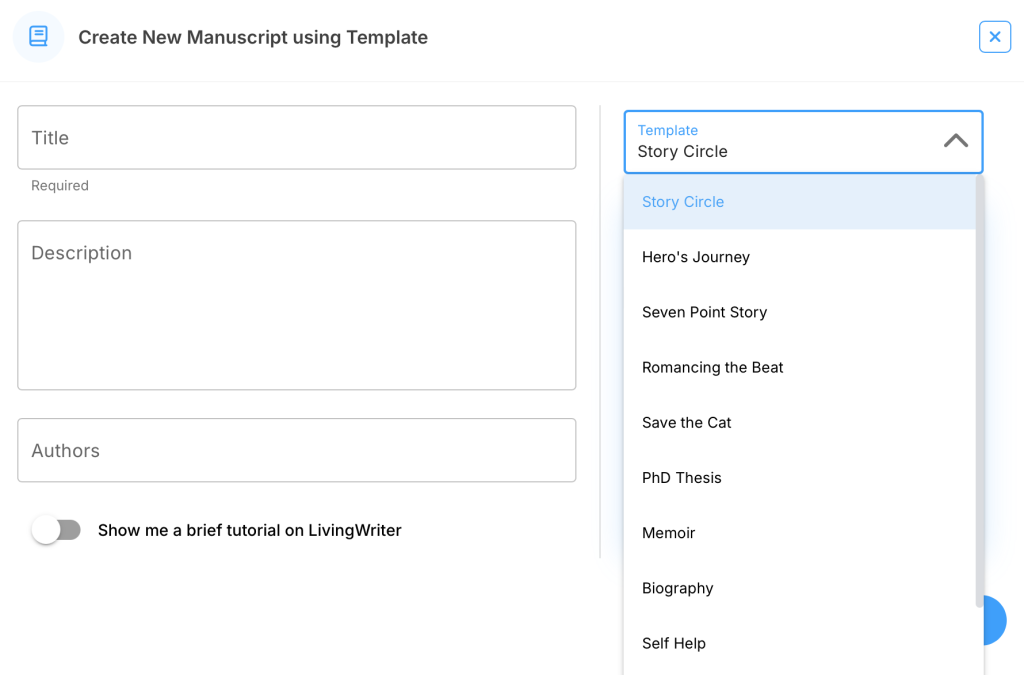
There are various options for fiction and nonfiction writers. Clicking on any one of them will give a description. For example:
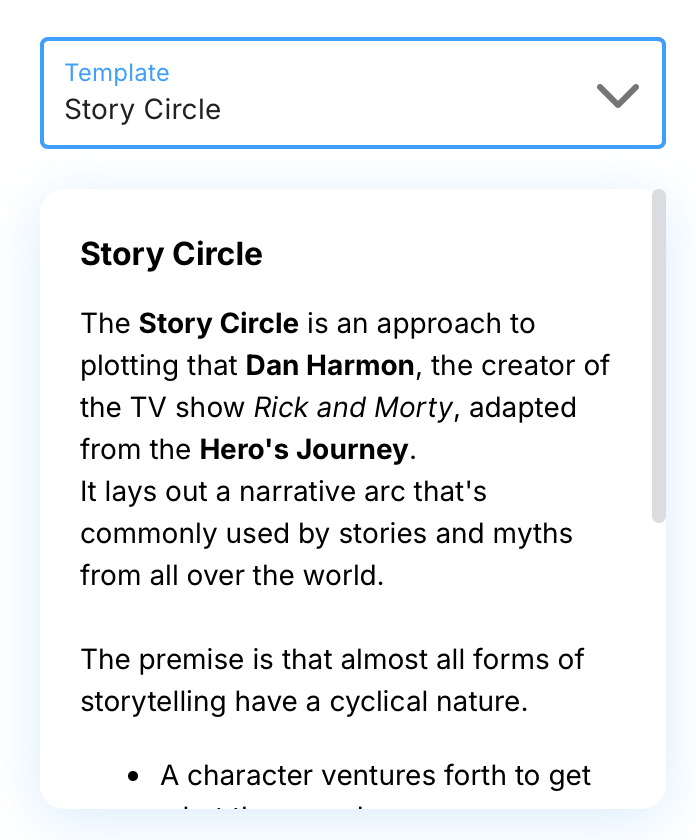
Once you’ve picked an outline and applied it, you’ll see each story progression alongside the left side of your manuscript and can add chapters to each one. This makes structuring your story more visual and a lot easier to maintain as you write because you always know where you’re at and where you’re going.
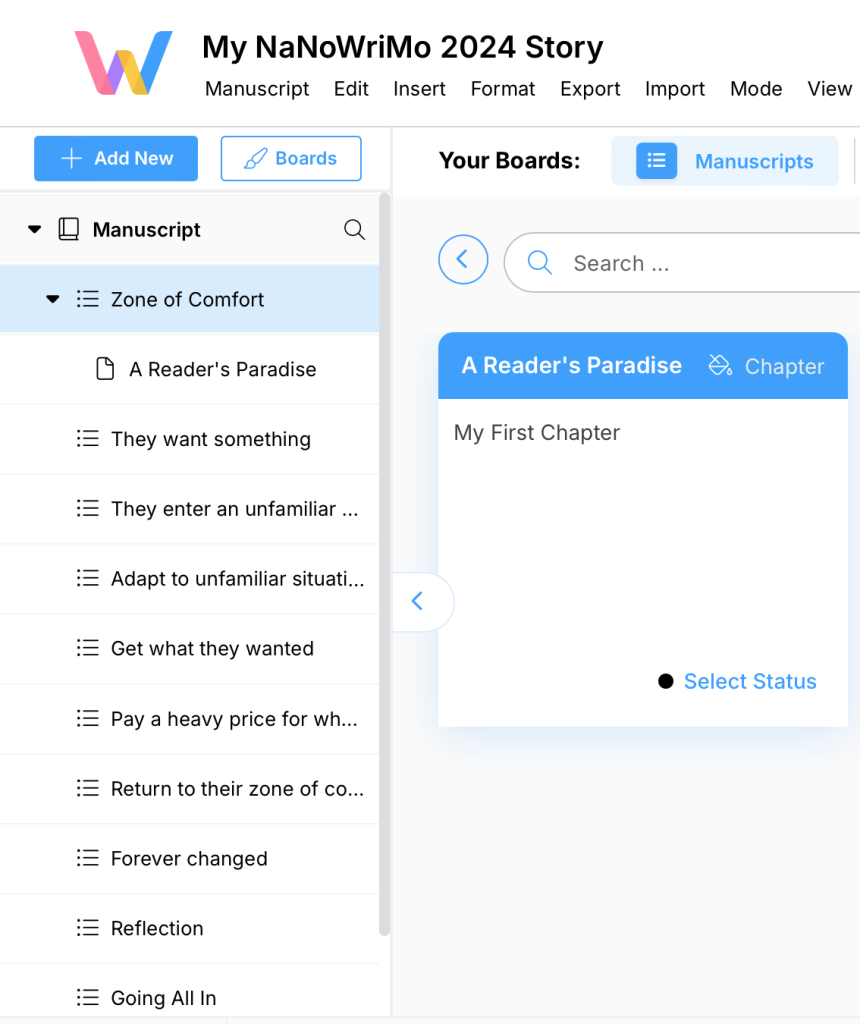
For the more precise plotting, like character arcs, sub-plots, and anything else, you can use the the plotting grids. The standard grid is like a table where you can edit each cell for an organized, visual way to keep up with things.
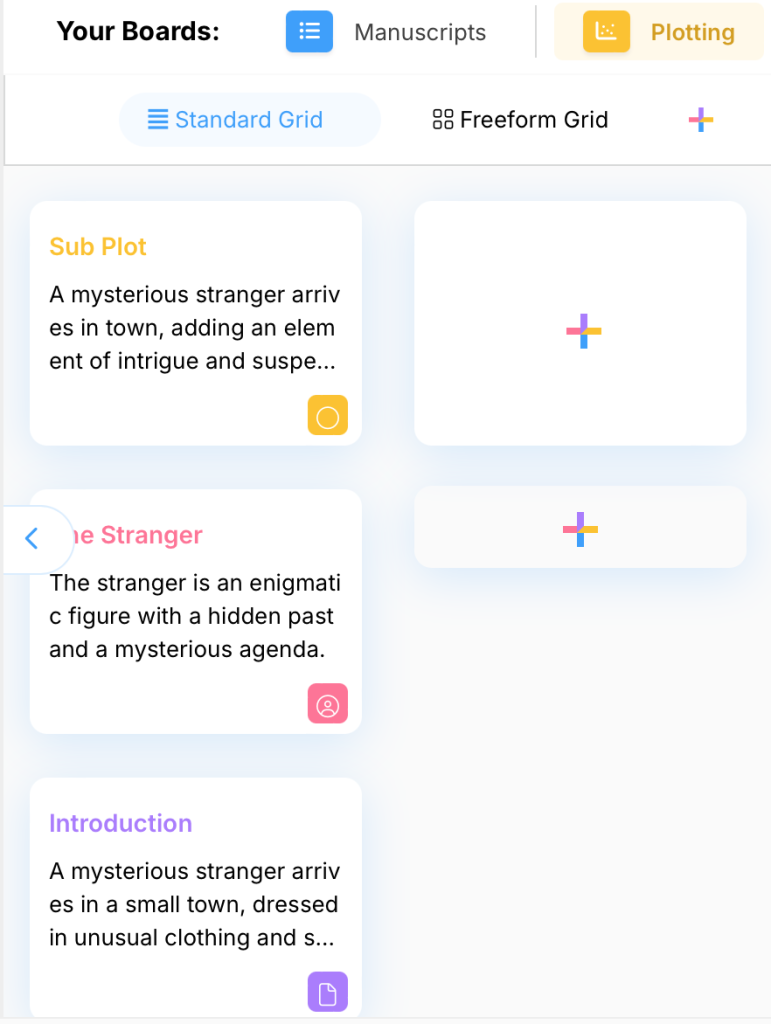
For less structured data, such as family trees and “cause and effect” chains, you can use the free-form grid. This option allows you to drag and drop as many elements onto the board as you need, organize and rearrange them, and even link them together.
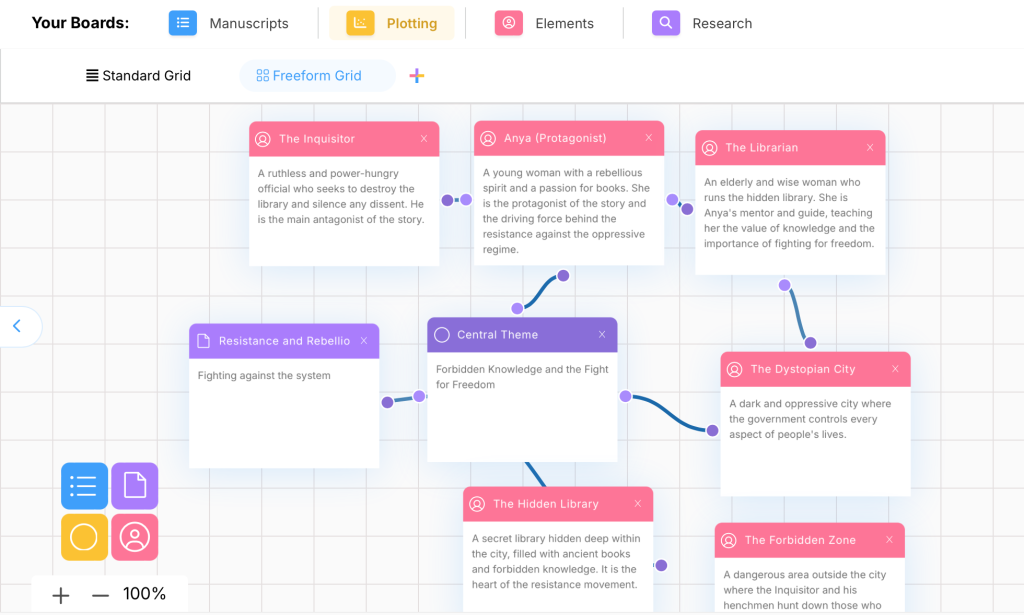
Smart Story Elements
LivingWriter brings your story elements (characters, locations, objects, etc) to life in your manuscript. When you add an element to your story, you have all the info available at the click. By clicking on an element, you can read the description you’ve written and add images, nicknames, and relationships to other characters.
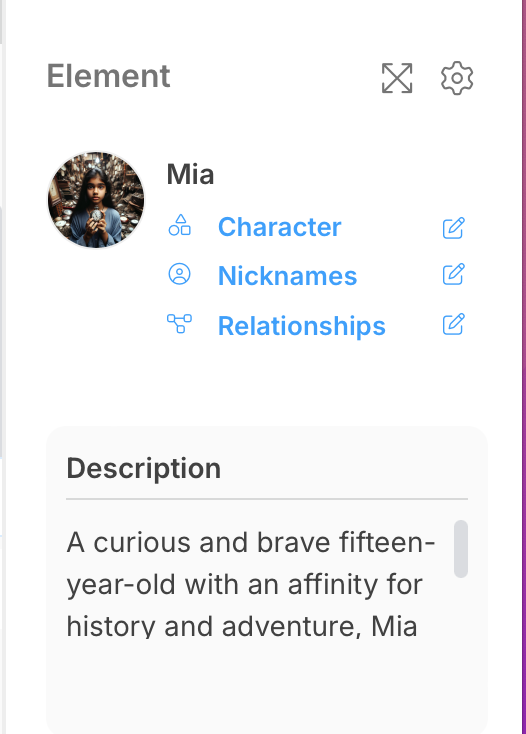
Moreover, anytime you type the name of an element into the story, it’s pulled in like a link. This allows you to view all the above info without leaving where you’re writing. And if you add a nickname to your character, typing that will also register. You can see what I mean here with the name Mia:
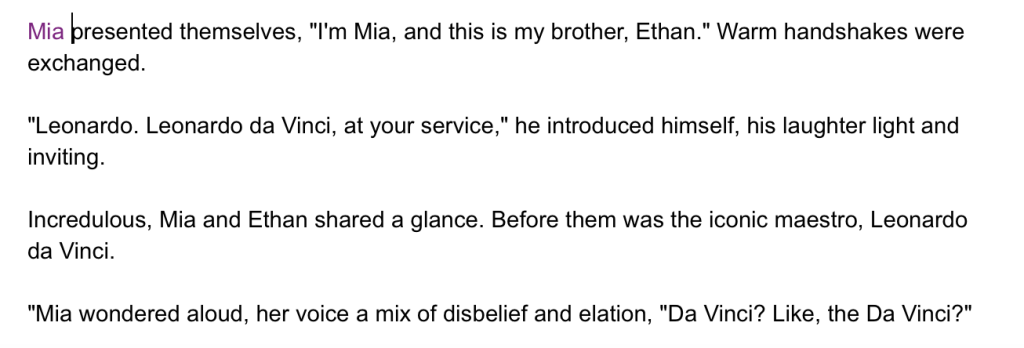
No more having to switch between tabs and note sections to see something about your character as you write. Not only is this convenient, but it also helps you avoid having mix-ups as your story gets longer and more intricate. And, of course, anything that saves you time is going to help you complete your NaNoWriMo goal.
Integrated Word Tracking And Goals
We have a NaNoWriMo stat feature, that allows you to keep track of your progress specifically for your NaNoWriMo story. It looks like this:

This feature allows you to directly track your progress related to the challenge from LivingWriter. You can see how much time you have left, how many words you’ve done overall, by day, the day before, or for the week.
Below these stats, you’ll find your “writing pace” which can give you a clear picture on how your doing and avoid having to crunch come the end of the month.
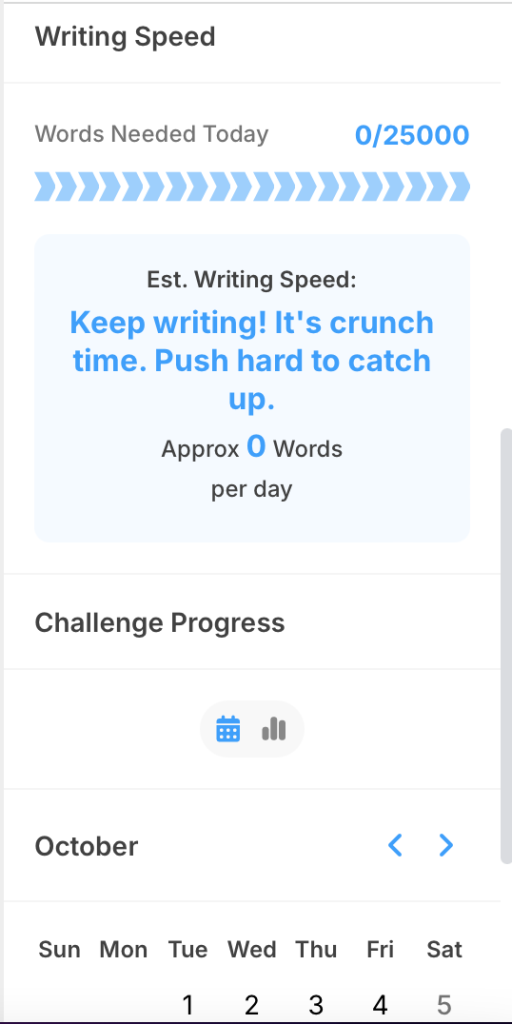
Even aside from NaNoWriMo, LivingWriter automatically tracks your word count while you write. This includes each chapter, scene, and the overall manuscript. You can also set daily or overall word count goals to ensure you’re on pace to meet your goals.
When you set an overall manuscript goal, you’ll input a goal word count and be able to set a deadline to meet the goal. If you’re going to stay on track and complete your goal, a deadline is exactly what you’ll need.
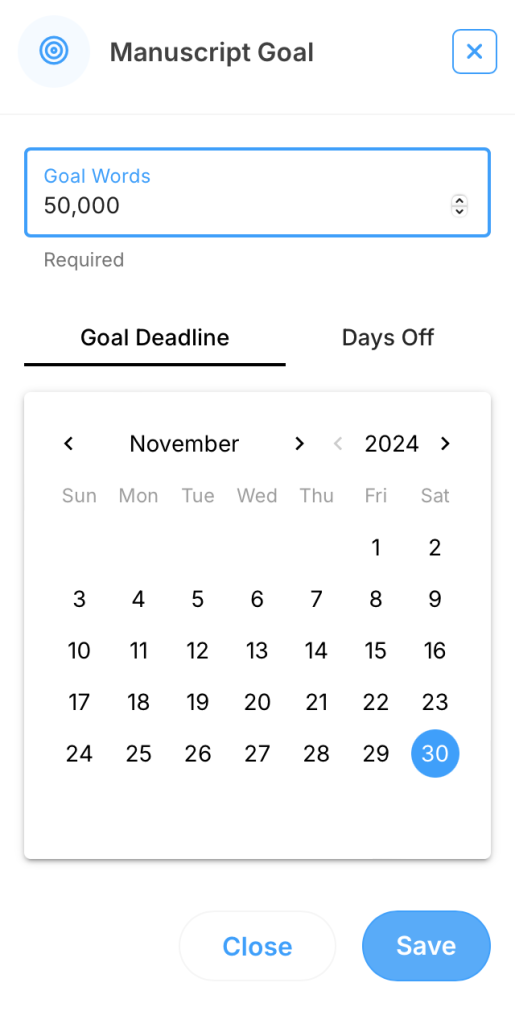
Once you’ve got your overall goal set, you can also set a session goal to help break things up in a mananagble way. If you choose to write every day in November, that would work out to 1666 words per day. So, you can set that as the goal for your session each day.
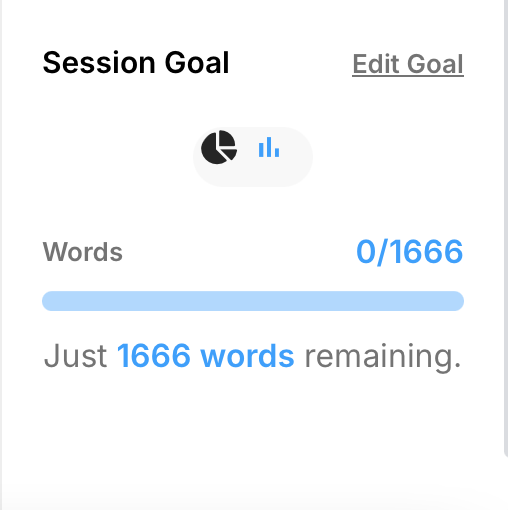
AI Features
With LivingWriter, you have access to AI tools to bring out the best of your writing without writing for you. From AI outlines and elements that can help with plotting and ideas to Manuscript Chat that can give you feedback on your writing, you’ll able to do your best writing without using any outside AI features.
Here are the AI features that can help you perform better for NaNoWriMo 2024.
AI Analysis
LivingWriter’s AI Analysis does several things – It gives you an overview, recommendations for improvement, a tone analysis, and the “importance” of the chosen section. This can be done for your chapters, sub-chapters, characters, and any other elements within your manuscript.

Once you’ve opened a section and had the AI analyse it, here is an example of what you can expect.
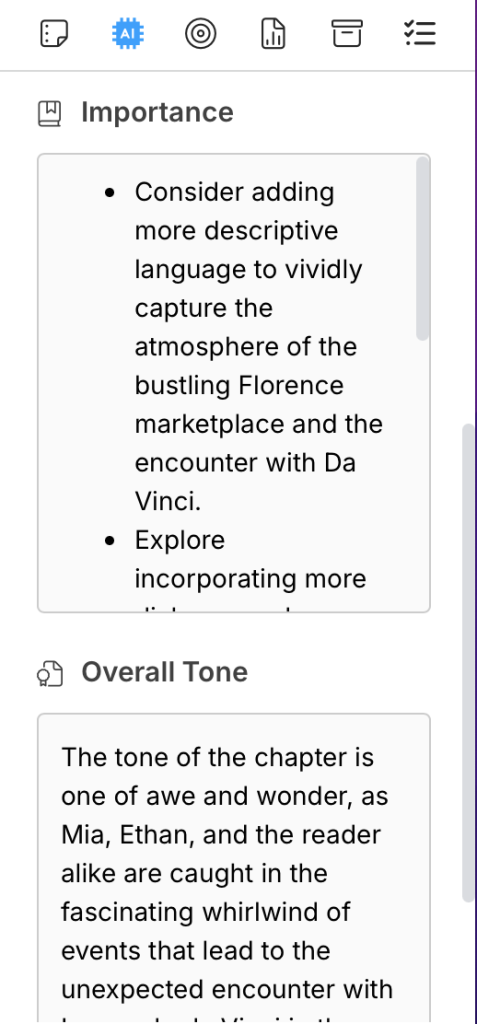
AI Rewrite
The LivingWriter AI rewrite feature allows you to highlight a portion of text and tell the AI what you would like changed (things like tone, mood, and more), and with the click of a button, it’s done. This is great for capturing certain vibes and themes in your head, while still keeping your writing in your style and voice.
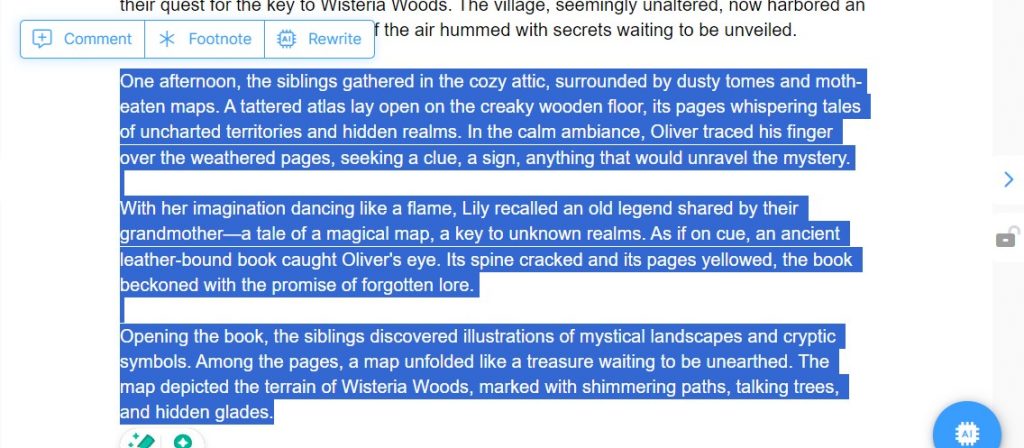
AI Manuscript Chat
You can use the AI manuscript chat feature for any question related to your manuscript. It can answer theoretical questions about your plot or characters, research-based questions, and even how to bring a particular feeling into a section.
The best part is that unlike ChatGPT or Gemini, the manuscript chat knows everything about your novel and all the elements within. This means you’ll always be getting specific, story-tailored advice instead of general advice.
Here is a question I asked:
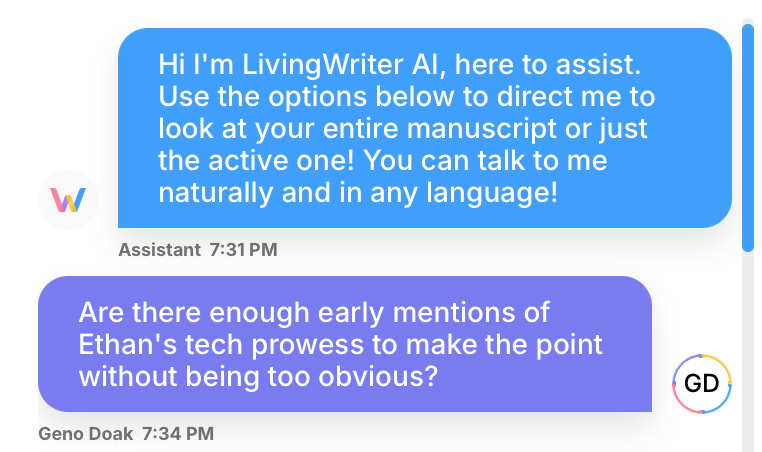
As you can see, the question is written plainly (no special terms or prompts needed) and directly related to my characters and plot. Here is the answer/advice I was given:
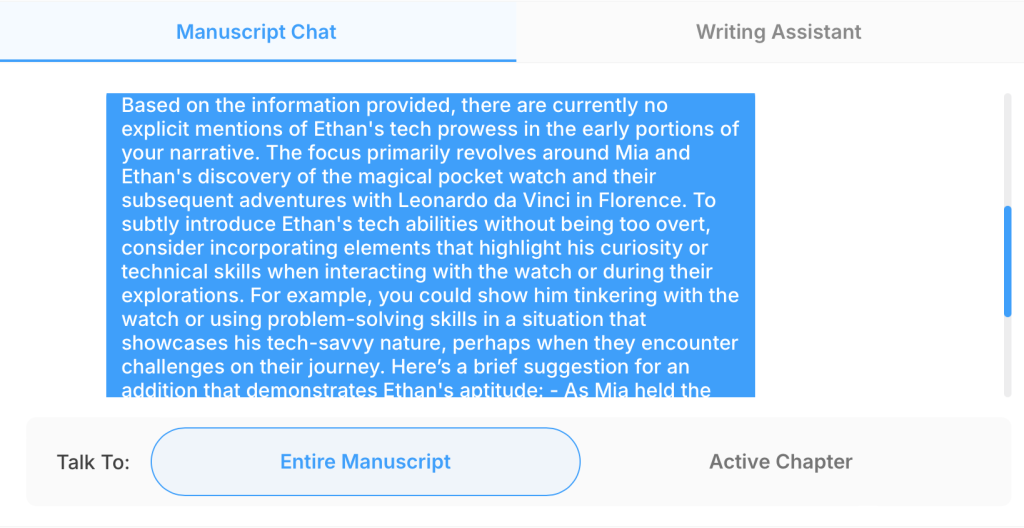
NaNoWriMo FAQ

Q: Does NaNoWriMo View Or Use My Writing
No, they don’t. Taken from their official site, this is what they had to say:
Users of our main website, NaNoWriMo.org, do not type their work directly into our interface, nor do they save or upload their work to our website in any way. On our main website, we do not have access to what you are writing and therefore cannot access, harvest, or otherwise use your written work.
Though certain writing apps integrate with our goal tracking feature, information passed between the NaNoWriMo API and the APIs of third-party apps only involves word count information and does not contain your written work itself.
NaNoWriMo.com
Q: How To Sign Up For NaNoWriMo 2024?
You can sign up at anytime on the NaNoWriMo homepage. The sign up button is located in the top right corner of the screen.
Q: Can You Set Goals Other Than Word Count?
No, unfortunately NaNoWriMo only has word count goals. 50,000 words is set as the goal because that is the standard for a novel.
Conclusion
NaNoWriMo is an amazing opportunity to test your limits, unleash your creativity, and maybe even finish that novel you’ve been dreaming of. Now that you know how LivingWriter can be your ultimate NaNoWriMo companion, there’s nothing stopping you!
So grab your keyboard, fire up LivingWriter, and let the writing adventure begin. Now, get out there and write something. Until next time, take care of yourselves.